Hallyu! The Korean Wave at the V and A – Korean Exhibition review
December 10, 2022Hallyu! The Korean Wave, is the Korean exhibition at the Victoria and Albert Museum. It showcases the vitality of Korean pop culture, including films, fashion, web comics, streaming series, and pop music.
It’s an intense assault on the senses and opens with a display, mainly via a patchwork of screens, on PSI’s 2012 international pop music hit, Gangnam Style. This song, and its accompanying dance, is simple, cheerful, and ridiculously catchy. If we’re honest, I thought it was a questionable choice to set the temperature for the show, but it turns out that this is exactly the tone and tempo that is hit throughout. The Gangnam District is an area of South Korea in Seoul that is particularly cool and expensive.
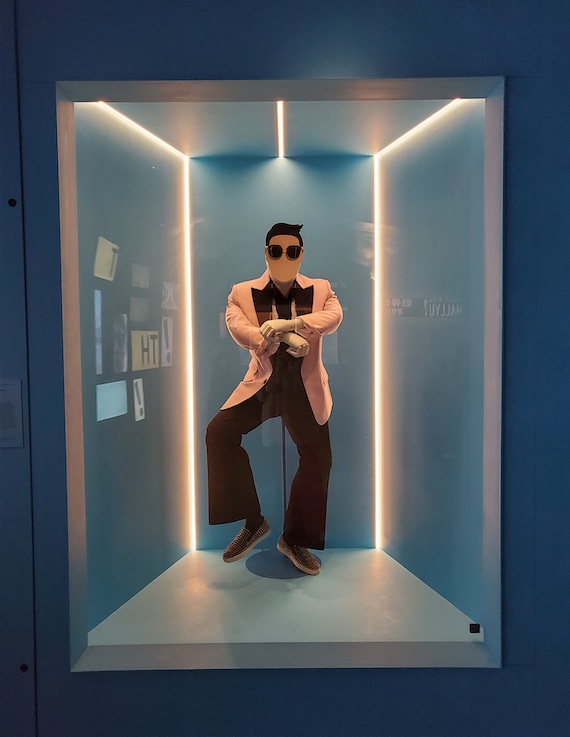
Hallyu – The Korean Wave. Korean Exhibition review. Photo Genevieve Jones
Hallyu, literally translated, means Korean Wave but also refers South Korean pop culture and entertainment itself. So after a quick introduction to the political climate that lead to the suppression of an organic growth of culture in both North and South Korea, we have a quick skim through the 1980s and 1990s, and then on to the films, TV, comics, music, dance and fashion in Korea over the last 20 years.
Korean Films and Series
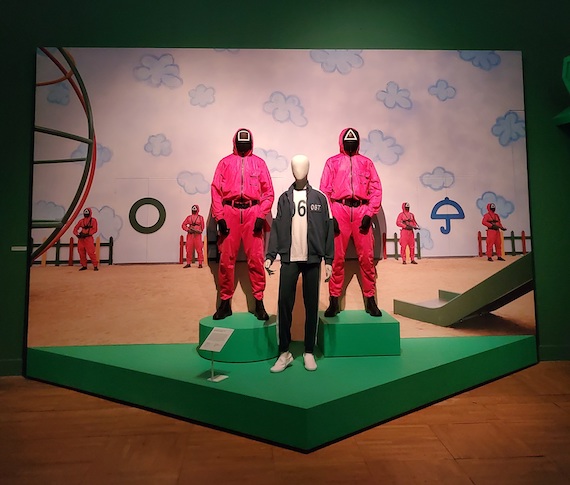
Hallyu – The Korean Wave. Korean Exhibition review. Photo Genevieve Jones
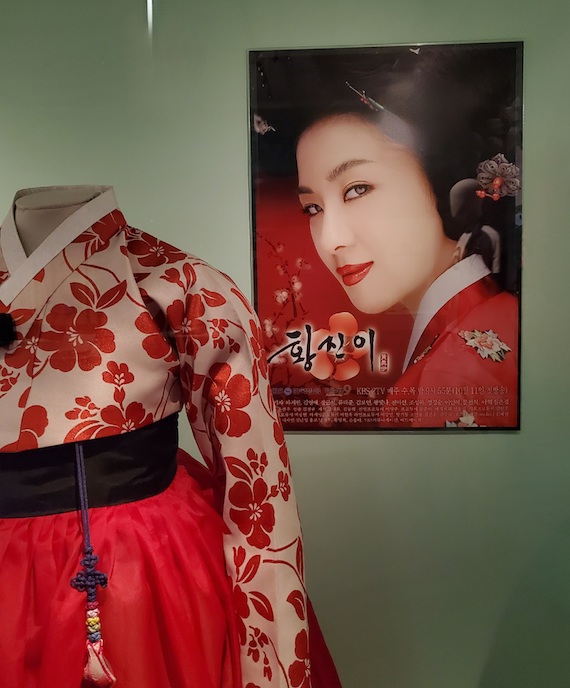
Hallyu – The Korean Wave. Korean Exhibition review. Photo Genevieve Jones
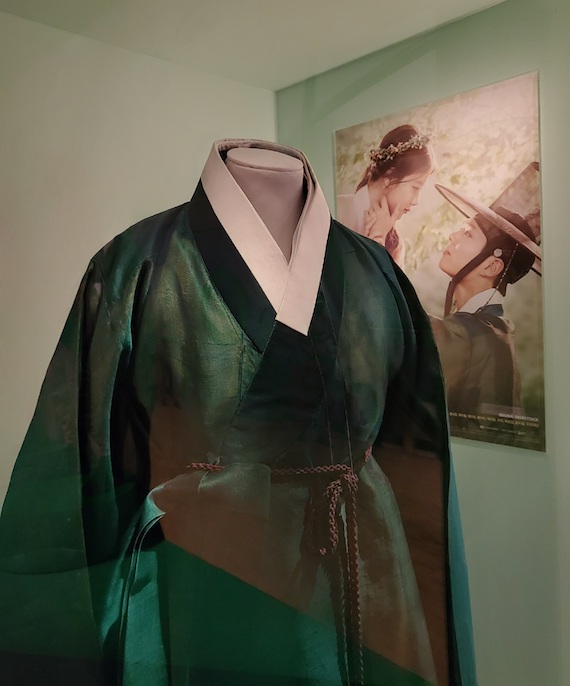
Hallyu – The Korean Wave. Korean Exhibition review. Photo Genevieve Jones
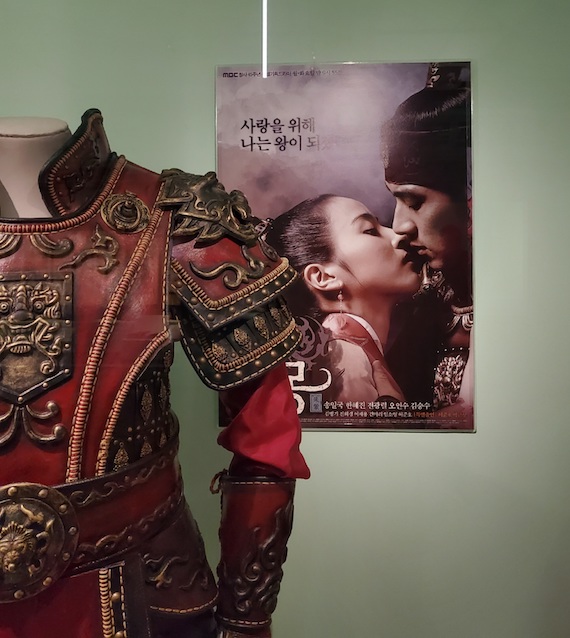
Hallyu – The Korean Wave. Korean Exhibition review. Photo Genevieve Jones
Interestingly, this show does not focus on the worldwide influences that the country must surely now enjoy, although some exhibition objects are created by the South Korean diaspora living or educated in other countries. What is often cited, however, is remixes of the country’s own history.
Koreans enjoy period dramas in the same way that we do. But while we might talk about the Victorian period, or Edwardian, etc, Koreans have the Joseon Dynasty, which, lasting from 1392 – 1897, covers five centuries. I expect that they actually divide it up in a more sophisticated manner than that though. I feel that surely fashions in clothing, poetry, literature, music and manners as well as political events must have changed and shifted during that time. In the exhibition they just called it the Joseon period, however. I think it’s a bit like us saying vaguely “In the Olden Days”.
Featured here are costumes from films full of warriors, princesses, servant girls, etc. Much like in Bridgerton, contemporary Korean costume design takes a loose approach to historical accuracy, and women’s hanbok are deliberately made with anachronistic big colourful florals, whilst men’s armour is apparently papier mâché with assorted door furniture attached.
Costumes
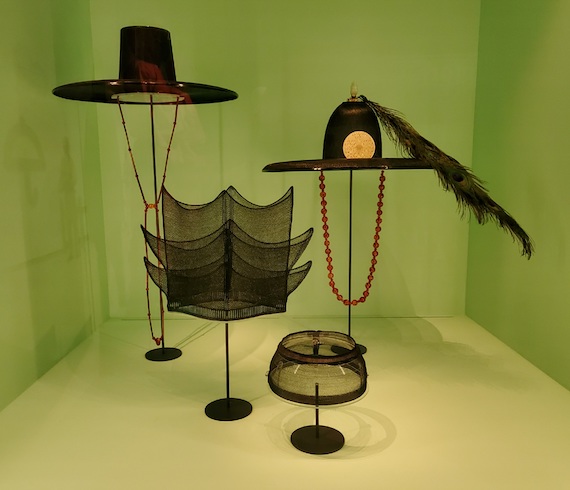
Hallyu – The Korean Wave. Korean Exhibition review. Photo Genevieve Jones
Korean historical fashion is a rich seam to mine. Like ours, their silhouette has evolved and colour has a great significance. Their head wear is fantastic and it is mentioned that staying tidy and beautiful was a moral obligation throughout their history. Particularly lovely is a case full of (original, I think?) men’s headwear and hats. The hats have tall crowns to accommodate topknots. Decorative beads are added as chinstraps and one has a peacock’s feather. One item is a headband, very loosely woven in horsehair which was worn under the hat to keep stray hairs from, well, straying. It is basically an ancient Korean hairnet. Another structure is also very light, fine and airy. It’s made from horsehair too, and has no need to be practical at all, as it’s meant for wearing indoors.
To give us some touch points, several films and TV series which have been successfully exported to a British audience are featured. There is a recreation of the pitiful bathroom set from Parasite. There are also objects from The Handmaiden, with the storyboard and a prop sewing kit that plays a pivotal role. Squid Game is represented by the iconic hot pink boiler suits of the guards (I always thought they were maroon!) and green tracksuits of the contenders, and a wig and long fight scene are stylishly presented from Old Boy.
Korea has also been able to mend its fractured relationship with Japan somewhat by gaining a following for its romantic dramas there.
K-Pop at the Korean Exhibition
Many of the costumes and outfits featured in this section come from seven-piece boy band BTS. It must be a big draw for fans. They appeared on Times Magazine’s list of the 100 most influential people in the world, and are not only South Korea’s biggest selling music artists of all time, but very big in the rest of the world, too.
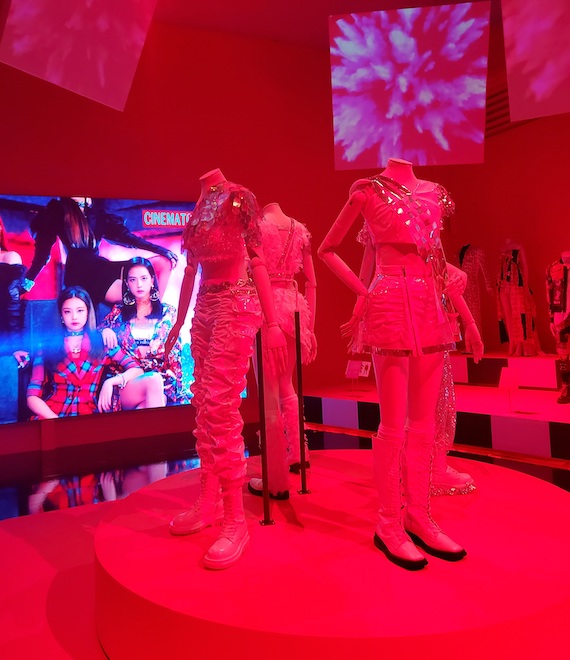
Hallyu – The Korean Wave. Korean Exhibition review. Photo Genevieve Jones
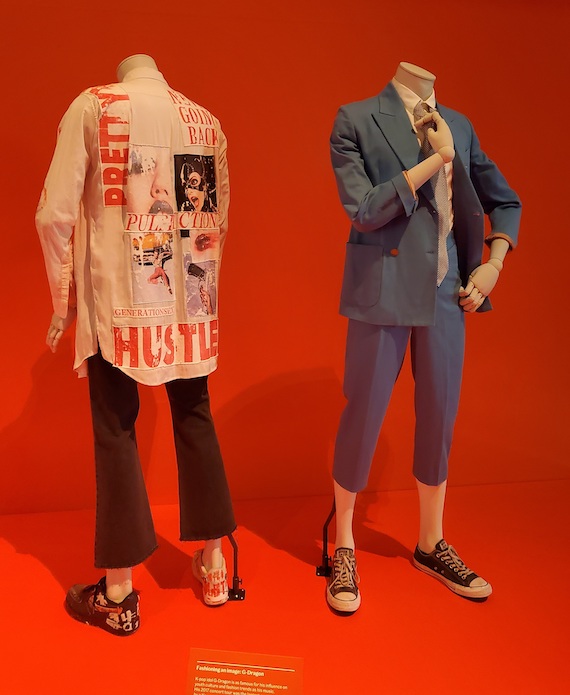
Hallyu – The Korean Wave. Korean Exhibition review. Photo Genevieve Jones
Fashion at the Korean Exhibition
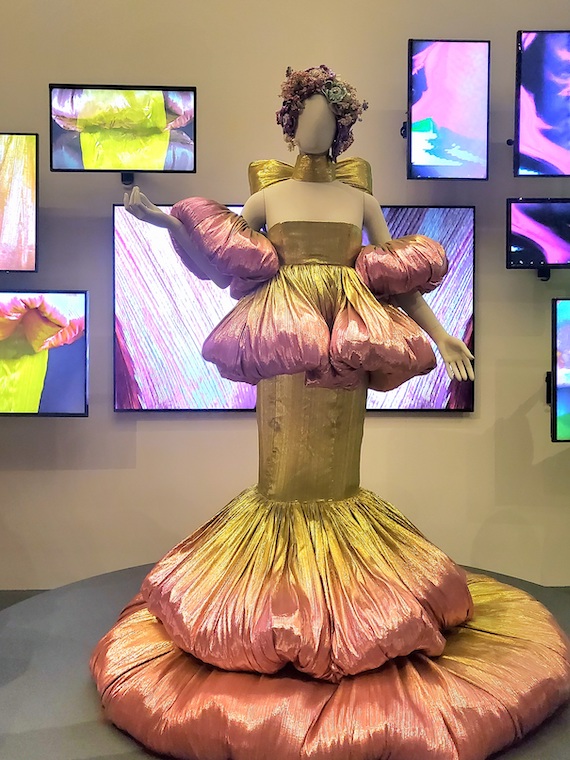
Hallyu – The Korean Wave. Korean Exhibition review. Photo Genevieve Jones
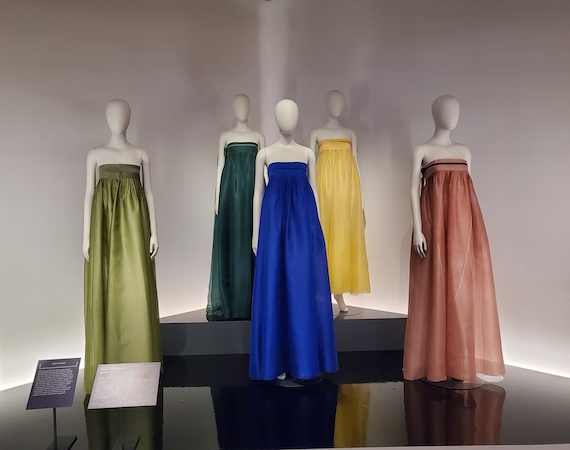
Hallyu – The Korean Wave. Korean Exhibition review. Photo Genevieve Jones
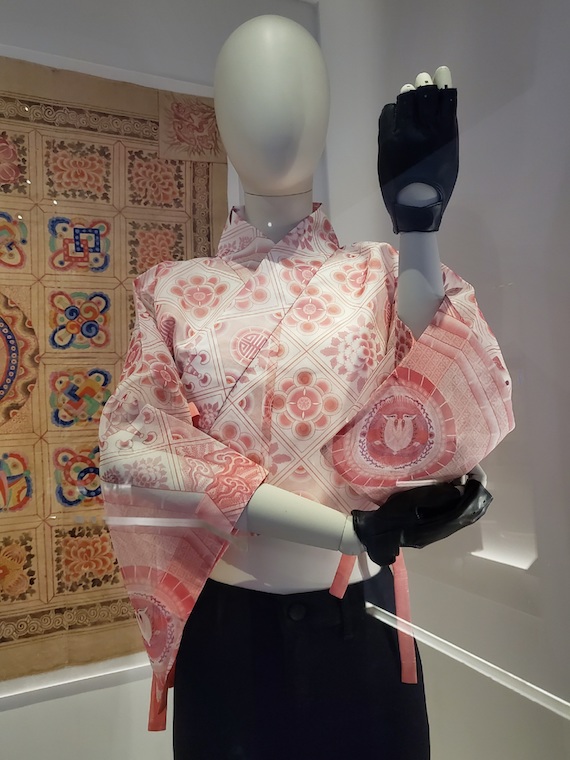
Hallyu – The Korean Wave. Korean Exhibition review. Photo Genevieve Jones
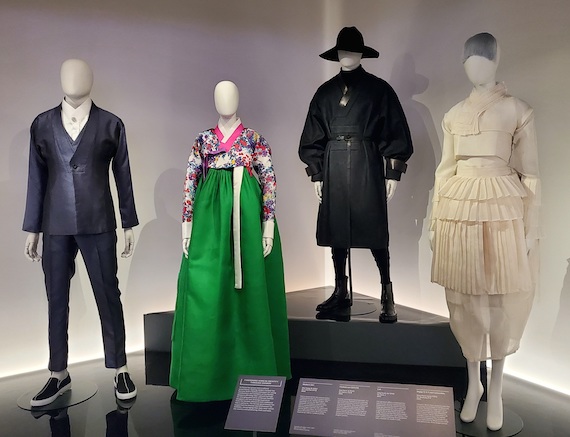
Hallyu – The Korean Wave. Korean Exhibition review. Photo Genevieve Jones
The final room is the fashion room. There are absolutely beautiful catwalk creations here, as well as streetwear designers. There is a focus on designers who use the traditional shapes of Korean clothing, called Hanbok. This encompasses layers of jeogori (blouse), baji (trousers), chima (skirts) and po (coat). Underwear also enhances the shape of the outfit, so garments equivalent to petticoats also add volume.
This ensemble is beautiful in its entirety, but contemporary designers play with its elements. Much as Western designers like Vivienne Westwood took inspiration from, say 18th century clothes, but dramatically chopped the full, ankle length skirts of the period into mini-crinis, here fashion designers take the jeogori, render it in an exaggerated print, and pair it with hot pants. Another designer created a man’s po in a traditional cut, but using denim and leather. A third showed a collection of chima in different mono colours. Stripped of the other elements, they are breathtakingly elegant.
Hallyu! The Korean Wave is at the V&A Museum until 25th June 2023.


